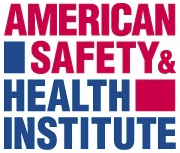
Infant and Child Choking Hazards: Foods and Objects
by Chris Schlesinger
In Home CPR Blog
Infant and Child Choking Hazards: Foods and Objects
In the United States about 3,000 people choke to death each year. However, infants and children account for most of those deaths. Approximately 80 percent of all emergency calls for choking are for victims under six years old, with many of the victims being two years old or younger.
These are scary statistics for any parent. It’s important to remember that infants and children have small airways, a natural curiosity about putting objects in their mouths, and their chewing is often incomplete.
What follows is my subjective list of foods and objects that pose a choking risk for infants and children. I’ve included my thoughts about some of the items. The list comes from many pediatric association recommendations and years of parents telling me their choking emergency stories. If you think I’ve left something off this list, please let me know.
Food
Hot dogs – those canned bite-sized hot dogs are too big.
Hard candy – hard candy also poses the risk of splintering and aspirating the lungs even if the candy is dislodged.
Whole grapes – cut them in halves or quarters!
Popcorn – Some of the kernels are only partially popped.
Other foods: Chewing gum; gummy bears and other gummy candies; marshmallows; peanut butter; nuts and seeds; dried fruit; raisins; raw fruits and vegetables; whole, firm beans or peas; cherries with pits; meat and meat bones; stringy foods like celery, steak and spaghetti; potato skin, chicken skin, and fruit peels; potato or corn chips; granola bars; cheese chunks.
Objects
Coins – Every study I’ve read has listed coins as the number one non-food object that results in emergency calls for choking for infants and children.
Other objects: Buttons, paper clips, marbles, deflated balloons, jewelry, watch batteries, ball point pen caps, arts and crafts supplies, rocks, detachable parts from small toys.
Remember, kids will put anything in their mouths. So if it’s small, keep it out of their hands if you’re not there to supervise.
Responding to a Choking Emergency
Many people don’t realize that the easiest way to learn to respond to a choking emergency is to take a CPR class. Both American Red Cross and American Heart Association CPR classes teach the current recommended responses to choking emergencies.
In these classes, you’ll learn how to use back blows and abdominal thrusts (also called the Heimlich Maneuver) depending on the age and size of the child. These techniques are very effective, but it’s important you learn them from a certified instructor.
About The Author:
Chris Schlesinger’s company In Home CPR teaches on-site safety classes at homes and businesses throughout the San Francisco Bay Area, serving Alameda, Contra Costa, Marin, Napa, Sonoma, San Mateo, Santa Clara and Solano counties. He offers certifications through the American Heart Association and American Red Cross in CPR, BLS, AED, standard first aid and pediatric first aid. He also teaches custom class, especially for new parents. Visit his websites at CPR Certification San Francisco or CPR Class San Mateo.
Copyright 2024 In Home CPR






